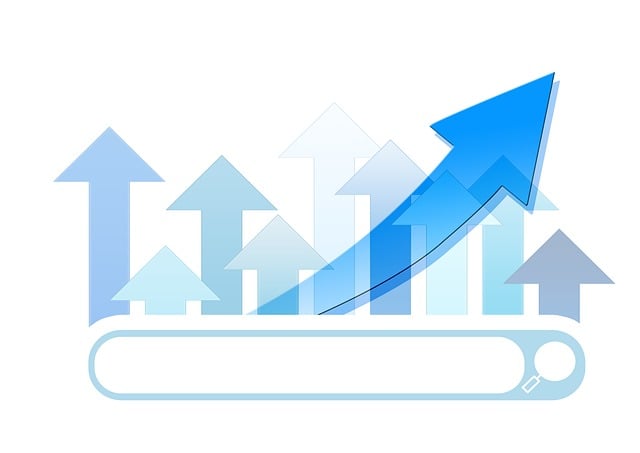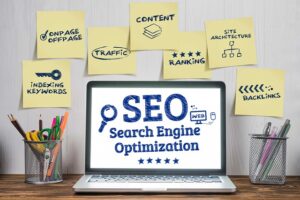On-Page Optimization Training equips individuals with skills to optimize web pages for search engines, focusing on keyword relevance (like meta descriptions and header tags) and user engagement. By learning to craft compelling content, integrate keywords naturally, and use structured data markup, participants can boost website visibility, drive organic traffic, and lower bounce rates. This training is crucial for digital marketers aiming to excel in SEO, ensuring effective search rankings and enhanced user experiences through strategic keyword research and Technical SEO practices. Success is measured using KPIs like CTRs, session duration, and bounce rates, allowing for continuous improvement and a stronger online presence.
“Unleash your website’s full potential with our comprehensive On-Page Optimization Training. In today’s digital landscape, understanding SEO best practices is paramount. From on-page optimization fundamentals to advanced techniques like title and header SEO, this guide equips you with the knowledge to elevate your content strategy. Learn how to optimize title tags, harness the power of meta descriptions, conduct efficient keyword research, address technical SEO aspects, and measure success through key KPIs. Dive into these essential topics and revolutionize your online presence.”
Understanding On-Page Optimization: The Cornerstone of SEO Strategy

On-Page Optimization is a fundamental aspect of any successful SEO strategy, and it forms the very cornerstone of your website’s visibility in search engine results. This process involves optimizing individual web pages to rank higher on search engines like Google, Bing, or Yahoo. It’s about making your content not only relevant but also engaging for both users and search algorithms.
In the realm of On-Page Optimization Training, you’ll learn how to enhance page titles, meta descriptions, header tags, and content to increase its keyword relevance. This includes understanding the importance of keyword placement, ensuring a balanced and natural use of target keywords throughout your text, and implementing structured data markup to provide search engines with valuable context. By mastering these techniques, you can significantly improve your website’s performance, drive more organic traffic, and establish a solid foundation for your SEO efforts.
Key Components of Effective Title and Header SEO

In the realm of digital marketing, on-page optimization is a game-changer, and none other than your website’s title and headers hold significant weight. Effective Title and Header SEO training equips folks with the knowledge to harness this power. The key components involve strategic keyword placement—integrating relevant terms naturally within titles and headings (H1, H2, etc.)—to capture both search engine algorithms’ attention and user interest. It’s about crafting compelling content that not only ranks well but also encourages a stay, reducing bounce rates.
Additionally, this training delves into the art of creating meta titles and descriptions that provide a succinct overview of the page’s content, enticing users to click while adhering to search engine optimization best practices. Balancing readability with SEO techniques ensures your web pages stand out in search results, fostering higher visibility and engagement, ultimately driving more traffic to your site.
Optimizing Title Tags: Crafting Compelling Headlines

Optimizing Title Tags is a crucial aspect of on-page optimization training, as it’s one of the first things search engines and users interact with. A compelling headline not only grabs attention but also provides a clear indication of what the page is about. When crafting title tags, keep in mind that balance is key. It should be brief yet descriptive, ideally under 60 characters to ensure full visibility in search results. The perfect title tag combines relevant keywords naturally and effectively while standing out to potential visitors.
A well-optimized title tag can significantly impact click-through rates (CTRs), as users are more likely to interact with headlines that resonate with their search queries. During your on-page optimization training, learn to integrate target keywords seamlessly into these titles, ensuring they remain readable and engaging. Avoid keyword stuffing at all costs, as it may lead to penalties from search engines and negatively affect user experience.
Utilizing Meta Descriptions for Enhanced Click-Through Rates

In the realm of digital marketing, understanding on-page optimization techniques is paramount for driving organic traffic and improving search engine rankings. One powerful tool often overlooked is the meta description—a concise snippet of text that appears below a webpage’s title in search engine results pages (SERPs). Crafting compelling meta descriptions can significantly boost click-through rates (CTRs) by providing users with a clear, accurate overview of what they can expect on your page.
During SEO training, you’ll learn to optimize meta descriptions to entice potential visitors without misleading them. The key is balancing keyword inclusion with natural language, ensuring the description reads well and accurately reflects the content below. By doing so, you not only attract more clicks but also foster a better user experience, which can positively impact your site’s performance in search rankings.
The Art of Keyword Research for On-Page Content Optimization

In the realm of digital marketing, understanding your audience and their search behaviors is paramount for effective On-Page Optimization Training. Keyword research forms the crucible where this understanding is forged. It involves delving into the intricate web of terms and phrases that users type into search engines, seeking information, products, or services. Through advanced tools and techniques, professionals can uncover hidden gems—long-tail keywords and semantic queries—that provide valuable insights into consumer intent.
By integrating these keywords seamlessly into on-page content, from titles and headings to meta descriptions and body text, marketers ensure their digital assets resonate with search engine algorithms and user preferences. This strategic approach not only enhances visibility in search results but also fosters a more engaging user experience, as content that aligns with searched terms is more likely to capture interest and encourage deeper exploration.
Technical SEO Considerations for Improved Indexing and User Experience

In the realm of digital marketing, Technical SEO plays a pivotal role in enhancing both indexing and user experience. By focusing on on-page optimization training, businesses can ensure their websites are not just visible to search engines but also intuitive for visitors. This involves optimizing critical elements like website structure, making content accessible with semantic markup, and ensuring fast loading speeds—all of which contribute to a seamless user journey.
Effective Technical SEO strategies empower sites to efficiently crawl and index content, reducing errors and improving the overall health of the site. A well-optimized website not only boosts search rankings but also lowers bounce rates and increases engagement. This, in turn, enhances user satisfaction and encourages longer visits, signaling to search engines that the site provides valuable information—a key factor in determining both visibility and credibility.
Measuring Success: Tracking Key Performance Indicators (KPIs) in On-Page Optimization

Measuring success is a crucial aspect of any SEO strategy, and for on-page optimization, tracking Key Performance Indicators (KPIs) is essential. These KPIs provide valuable insights into the effectiveness of your on-page optimization training efforts. By setting clear goals and defining measurable metrics, you can assess the impact of your optimizations. For instance, monitoring click-through rates (CTRs), average session duration, and bounce rates allows you to gauge user engagement and interest in your web pages.
On-Page Optimization Training should aim to improve these KPIs by enhancing the overall user experience. Well-optimized content that ranks higher on search engines will naturally attract more organic traffic. With regular analysis of these metrics, marketers can identify areas for improvement, refine their strategies, and continue to deliver better results, ensuring a successful and sustainable online presence.
